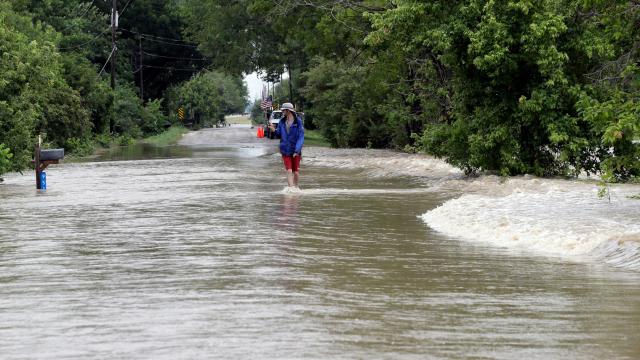America is not ready for the extreme rainfall coming with climate change. A quick dramatic thunderstorm in New York on Thursday flooded Staten Island so badly that brown murky water joined bus riders for their evening ride home.
It’s just one in a growing number of examples of infrastructure across the United States not being up to the task. And now, a newly published study shows just how unprepared the infrastructure across the U.S. is to handle extreme rainfall events. Many cities’ water management systems — think stormwater drains or dams — aren’t equipped to handle climate change-influenced weather shifts, according to the study published in Geophysical Research Letters.
Staten Island got a taste of that when stormwater infrastructure failed to handle about the inch of rain that fell in 20 minutes. That’s because the system wasn’t built to withstand that much rain in such short a time. But New Yorkers aren’t alone in this predicament.
“The take-home message is that infrastructure in most parts of the country is no longer performing at the level that it’s supposed to because of the big changes that we’ve seen in extreme rainfall,” lead author Daniel Wright, a hydrologist at the University of Wisconsin-Madison, said in a statement.
The team of researchers looked at the data from more than 900 weather stations for the years 1950 to 2017 in the U.S. to find out how often extreme storms shot past the standards city infrastructure can handle. The scientists found that extreme weather events are happening 85 per cent more often in the eastern U.S. in 2017 compared to 1950. In the West, overwhelming storms are happening 51 per cent more often.
Climate change is shifting precipitation patterns and making rainfall events more extreme as our planet’s rising temperature is increasing the amount of water vapour in the atmosphere. We’re seeing that play out already, but these events are expected to grow much worse: If we continue with business as usual, today’s most extreme downpours could become five times more likely by the end of the century.
When infrastructure gets backed up, the result is often floods or even flash floods that can be dangerous. People and cars can be swept away if they’re not expecting the water to rise. Standing water also poses risks to health and infrastructure — it can contain contaminants that can ruin people’s homes and have averse impacts on health.
If the water infrastructure could handle this amount of water in such a short amount of time, however, it wouldn’t be such a hazard. The study authors hope their findings help inform a new age of renovation in the country.
